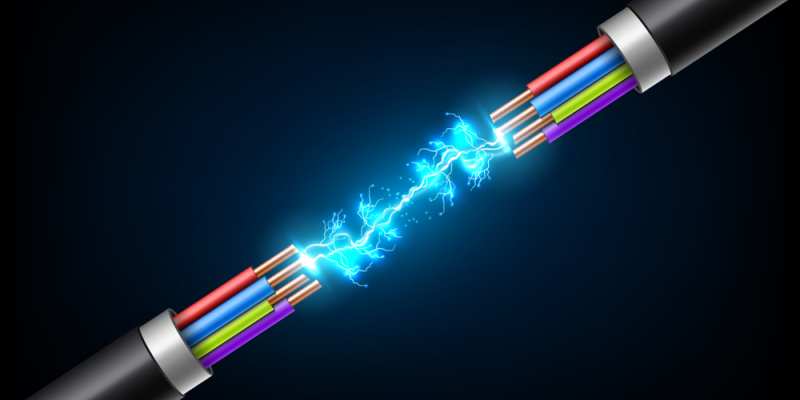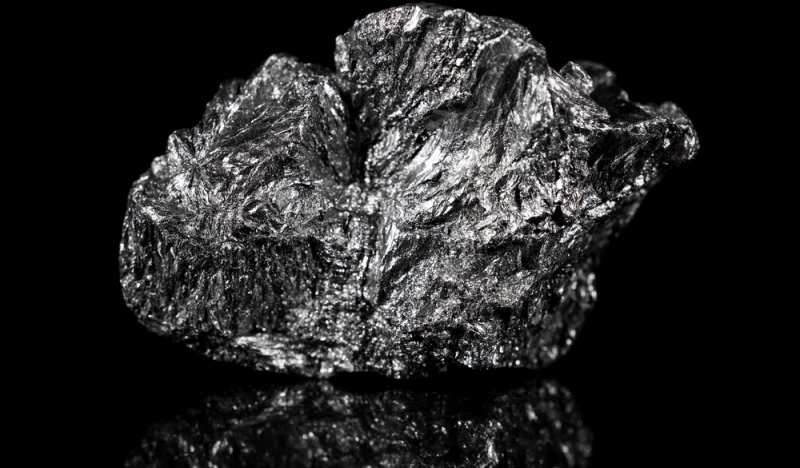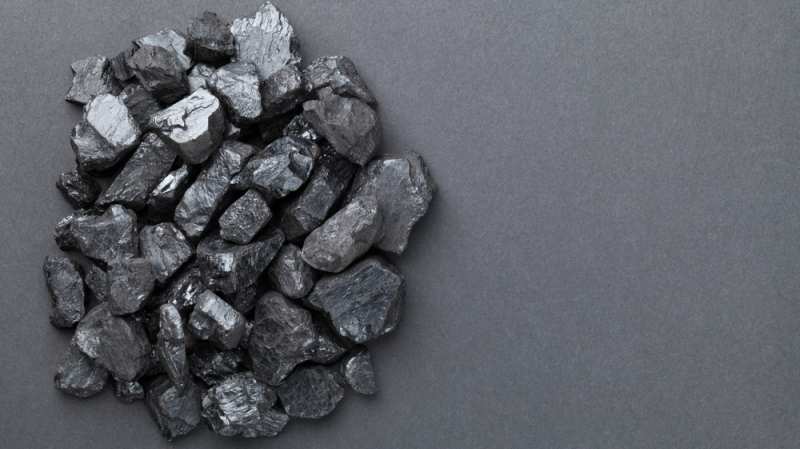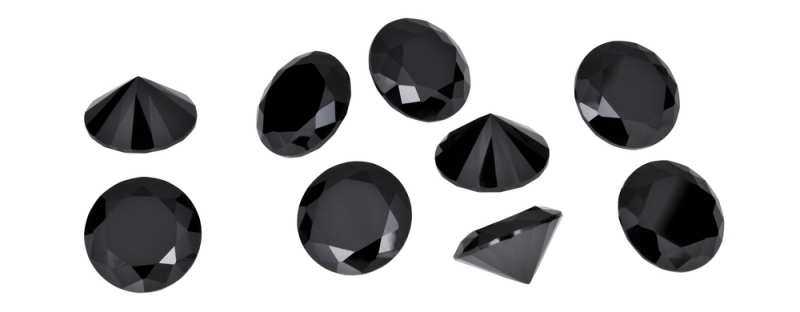Diamonds, including black diamonds, are known for their exceptional hardness, scoring a perfect “10” on the Mohs scale. They are also excellent conductors of heat. However, when it comes to electrical conductivity, the presence of inclusions in black diamonds affects their behavior.
Black diamonds owe their color to inclusions of graphite, which is a highly conductive material. As a result, some black diamonds can indeed conduct electricity.
In this article, we provide a comprehensive exploration of black diamonds and their electrical conductivity. We delve into the specifics and address any questions you may have on this intriguing aspect of these dark-colored gemstones. Let’s explore further!
DESIGN YOUR OWN ENGAGEMENT RING: START WITH A SETTING OR START WITH A DIAMOND. IT’S REALLY UP TO YOU!

What Is Electrical Conductivity?
Electrical conductivity refers to how easily an electric current can pass through a material, while electrical resistivity measures the material’s resistance to the flow of electric current.
In many cases, materials that are good conductors of electricity are also good conductors of heat, as commonly observed in metals. Interestingly, the relationship between electrical conductivity and temperature is not always straightforward.
For conductive materials, an increase in temperature typically leads to a decrease in conductivity, and vice versa. However, for insulating materials, higher temperatures can actually increase their conductivity. This relationship plays a crucial role in the development of superconductors.
There are two primary methods used to measure electrical conductivity: the two-point method and the four-point method.
The two-point method involves passing an electric current through a sample of the material using two copper nodes attached to the ends of a bar. The amount of current flowing through the bar is then measured.
The four-point method is more precise but also more prone to errors. The challenge lies in the fact that the measuring equipment itself has properties that affect the measurements. As a result, the measured electrical conductivity tends to be lower than the actual value.
To mitigate these errors, the four-point method utilizes a separate voltmeter connected to the sample in addition to the ammeter connected to the ends. The ammeter measures the electrical current flowing through the sample, while the voltmeter tracks the voltage.
Both methods provide valuable insights into the electrical conductivity of materials and play a crucial role in various scientific and technological applications.

Let’s Talk About Black Diamonds
Black diamonds, also known as carbonados, are composed of crystallized carbon like other diamonds. However, their black color is formed through a different process compared to other diamonds.
The color of natural black diamonds is a result of graphite inclusions. When the level of inclusions is high, the entire stone appears black. This distinctive feature has contributed to the increasing popularity of black diamonds. It’s fascinating to consider that these “imperfections” actually enhance the unique beauty of black diamonds.
It’s important to note that natural black diamonds are not the only option available. Treated black diamonds can be irradiated to achieve a black appearance, although their true color is a very dark green. These gems can also undergo high-temperature and low-pressure annealing, which induces significant graphitization.
Cutting and polishing natural black diamonds can be challenging. Their irregular growth patterns, as they are composed of multiple diamond crystals or polycrystalline structures, make them difficult to work with. The numerous graphite inclusions can result in pits, adding to the complexity of the polishing process. Black diamonds are also prone to chipping or breaking during cutting. Faceting black diamonds generally takes longer than white or colorless diamonds, and the finished gemstones are more susceptible to damage.
Returning to the graphite inclusions, they are often prominent in certain black diamonds, allowing these gems to conduct electricity through the graphite content.

What Is Graphite?
Graphite, a naturally occurring form of crystalline carbon, is a versatile mineral with unique properties. It can be found in igneous and metamorphic rocks and is often referred to as a “mineral of extremes.”
Graphite possesses several distinct characteristics. It is remarkably soft and can be easily cleaved with minimal pressure. Additionally, it has a low specific gravity. On the other hand, graphite exhibits exceptional resistance to heat and is inert when in contact with most minerals. These properties make it valuable in various manufacturing and metallurgical applications.
In terms of geologic occurrences, graphite forms when carbon undergoes high pressure and heat in the upper mantle of the Earth’s crust. Most graphite found on the Earth’s surface is created at convergent plate boundaries. Organic-rich shales and limestones are subjected to the intense heat and pressure of regional metamorphism, resulting in the formation of rocks like marble, gneiss, and schist that contain small crystals and flakes of graphite.
When graphite concentrations are sufficiently high, these rocks can be mined. They are crushed to liberate the graphite flakes and then processed through specific gravity separation to remove the lower-density graphite. Graphite can also be produced through the metamorphism of coal seams. During metamorphism, the organic molecules in coal break down, leaving behind almost pure carbon that crystallizes into graphite. This graphite occurs in seams similar to the original layer of coal and is referred to as amorphous graphite, although it does possess a crystalline structure.
In addition, a small portion of graphite forms through the reaction of carbon compounds during hydrothermal metamorphism, often found in veins of hydrothermal mineral deposits. Graphite’s high degree of crystallinity makes it a preferred material for various electrical applications.
Interestingly, graphite can also occur as tiny particles in basalt flows, as a primary mineral in igneous rocks, and in pegmatites. However, these forms of graphite do not hold economic significance.
In summary, graphite is a widely distributed mineral with diverse occurrences in different rock types, making it a highly versatile and valuable material.

Graphite Vs. Diamonds: Things To Remember
It is common knowledge that both graphite and diamonds are mineral forms of carbon.
Diamonds are formed deep within the Earth’s mantle under extreme heat and pressure. Conversely, graphite is found near the Earth’s surface and is formed within the crust at lower pressures and temperatures.
Although graphite and diamonds have the same composition, their structures differ significantly.
In graphite, carbon atoms are arranged in a hexagonal network that forms sheets only one atom thick. These sheets are loosely bonded, allowing them to easily cleave or slide over one another with minimal force. This characteristic gives graphite its low hardness, slippery texture, and perfect cleavage.
In contrast, carbon atoms in diamonds are bonded in a three-dimensional framework structure. Each carbon atom forms strong covalent bonds with four other atoms, resulting in a rigid and stable network. This arrangement securely holds the carbon atoms in place, contributing to the exceptional hardness of diamonds.
On the topic of graphite, it’s worth mentioning its synthetic counterpart.
Synthetic graphite is produced by heating carbon-rich materials like petroleum coke and coal tar pitch to temperatures exceeding 2500 degrees Celsius. At such high temperatures, volatile materials and many metals in the feedstock are separated or eliminated. The remaining graphite particles bond together, forming a sheet-like crystalline structure.
Synthetic graphite can achieve purity levels of over 99% and is utilized in applications that require extremely pure graphite material.

Beyond Black Diamonds: Are There Other Gems That Conduct Electricity?
When certain crystals are compressed, they can generate an electric current, and conversely, if an electric current is passed through these crystals, they undergo vibrations and “squeeze” themselves. This phenomenon is known as piezoelectricity. In scientific terms, piezoelectricity refers to the production of an electrical potential across the sides of a crystal when it experiences mechanical stress.
In practical terms, a piezoelectric crystal functions like a miniature battery, with one face carrying a negative charge and the opposite face carrying a positive charge. When the two faces are connected to form a circuit, electric current flows.
Quartz, tourmaline, and topaz are among the most common piezoelectric crystals. Let’s delve into each of them.
Quartz is a widely distributed mineral composed primarily of silica or silicon dioxide. It has significant economic importance and is found in various gemstone varieties such as citrine, amethyst, rose quartz, and smoky quartz. Quartz is also utilized in the production of glass, ceramics, and silica glass used in optics.
Tourmaline is a borosilicate mineral with a complex and variable composition. It exists in three types: iron tourmaline, magnesium tourmaline, and alkali tourmaline. Transparent and colored tourmaline crystals are cut into gems, and the mineral’s piezoelectric properties make it useful in pressure devices and depth-sounding instruments. Tourmaline can be found in detrital deposits and is a common accessory mineral in sedimentary rocks.
Topaz is a silicate mineral highly valued as a gemstone. It is an aluminum silicate containing fluorine and is formed during the final stages of igneous rock crystallization from fluorine-bearing vapors. Topaz is often associated with cassiterite and is found in granite cavities, rhyolites, and high-temperature veins. It occurs in various colors, including colorless, yellow, blue, and brown, and is used primarily in jewelry.
These gemstones, with their piezoelectric properties, showcase the fascinating interaction between mechanical stress and electrical potential in crystals.

Final Word
Would you be able to provide the correct answer if someone asked you, “Can black diamonds conduct electricity?” By the end of this guide, we certainly hope so.
In the case of white or colorless diamonds, the rigid structure formed by the covalent bonds in each outer shell of carbon atoms leaves no free electrons available for carrying an electric charge.
However, black diamonds are different. They contain graphite inclusions. Graphite is a well-known conductor of electricity, which means that some black diamonds can indeed conduct electricity.
How does this work? Within the black diamond, there are layers of graphite inclusions where electrons can move freely. Additionally, there are certain gems with piezoelectric properties that enable them to conduct electricity. Some popular examples include quartz, tourmaline, and topaz.


